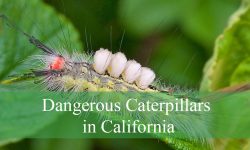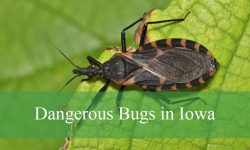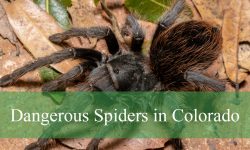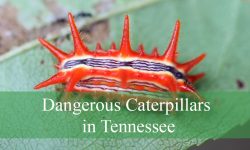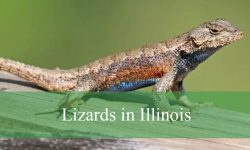Bobcats are one of the most fascinating wild cats found in North America, and Pennsylvania is home to a healthy and thriving population. These medium-sized predators often go unnoticed due to their elusive behavior and incredible adaptability to different environments. While they are rarely seen by humans, their presence is widespread across the state, from remote forests to rural farmlands. For wildlife enthusiasts, naturalists, and anyone curious about Pennsylvania’s native animals, understanding the bobcat is an exciting way to connect with the state’s natural heritage.
In Pennsylvania, bobcats are not just a sign of wilderness but also an important part of the ecosystem. They control prey populations such as rabbits, squirrels, and rodents, balancing the food chain. Their adaptability has allowed them to thrive even as human development continues to shape the landscape. For those who wish to learn more about these mysterious cats, it is essential to explore their physical features, behavior, habitat preferences, feeding habits, reproduction, and the best times and places to see them in the wild.
This article provides an in-depth look into bobcats in Pennsylvania, including how to identify them, where they live, what they eat, and how they behave throughout the year. With patience and knowledge, it is even possible to catch a glimpse of one of these remarkable predators in their natural habitat.
Types of Bobcats in Pennsylvania
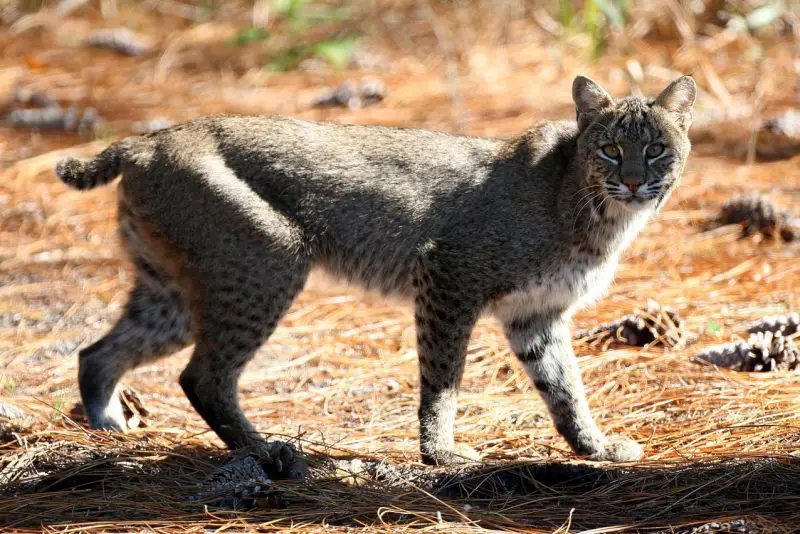
When discussing types of bobcats in Pennsylvania, it is important to clarify that the state is home to a single species, the bobcat (Lynx rufus). However, within this species, scientists recognize subtle regional variations in size, coat color, and adaptability. These differences do not represent distinct subspecies in Pennsylvania but rather local adaptations to climate, terrain, and available prey.
In northern Pennsylvania, particularly in the mountainous and forested regions, bobcats tend to have thicker winter coats, with fur ranging from grayish-brown to reddish-brown and darker spotting for camouflage in snowy environments. Their paws are slightly larger compared to individuals found in the southern part of the state, an adaptation that helps them move more efficiently over snow-covered terrain.
In southern Pennsylvania, bobcats may appear slightly smaller with shorter fur and lighter coloration. This variation allows them to stay cool in warmer months while blending into the fields, woodlands, and scrubby hillsides. Though these differences exist, all bobcats in Pennsylvania share the same essential characteristics: tufted ears, short “bobbed” tails, and powerful muscular bodies designed for stealth and agility.
Identification and Physical Characteristics
The bobcat is a medium-sized wild cat, larger than a domestic house cat but significantly smaller than a cougar. Adult bobcats in Pennsylvania typically weigh between 15 and 35 pounds, with males being larger than females. Their bodies measure about 25 to 40 inches long, while their tails are short, averaging 4 to 7 inches, giving them their name.
Their coats are patterned with a mixture of tan, brown, black, and white. Dark spots and streaks provide camouflage, especially in forests, fields, and rocky terrain. Their underbellies are usually white, with black spots that help break up their outline when stalking prey. One of their most distinctive features is their ear tufts, which are short but visible, adding to their keen sense of hearing.
The bobcat’s face is framed by a ruff of longer fur, giving them a somewhat fierce expression. Their eyes are sharp and golden, adapted for excellent night vision. Their muscular legs and padded paws make them powerful hunters, capable of leaping several feet in a single bound. These adaptations allow them to survive in Pennsylvania’s varied landscapes, from dense forests to farmlands.
Habitat and Range in Pennsylvania
Bobcats in Pennsylvania are highly adaptable and occupy diverse habitats across the state. They are most commonly associated with forests, but they also thrive in swamps, agricultural lands, and areas with rocky outcrops. The dense forests of northern and central Pennsylvania provide prime territory, where bobcats can hunt in seclusion and raise their young with minimal disturbance.
In the Pocono Mountains and the Allegheny Plateau, bobcats make use of thick conifer stands and rugged terrain. These areas provide excellent cover for stalking prey and safe denning sites. In southern and eastern Pennsylvania, they are often found in farmlands adjacent to forest patches, where they can feed on abundant rabbits and rodents.
Bobcats are territorial animals, and males typically control larger home ranges than females. A male’s territory may span up to 30 square miles, while a female’s range is usually smaller, around 6 to 12 square miles. Territories often overlap, but bobcats use scent markings and vocalizations to minimize direct conflict. Their ability to adapt to changing environments has helped them thrive even as Pennsylvania has undergone urban expansion.
Feeding Habits and Hunting Behavior
Bobcats are carnivorous predators, and their diet in Pennsylvania reflects the variety of prey available in different habitats. They primarily hunt rabbits, hares, and rodents, but they are also known to take squirrels, birds, turkeys, and even young deer. Their opportunistic feeding habits allow them to survive across diverse landscapes, from rural woodlands to semi-developed areas.
They hunt mainly at dawn and dusk, taking advantage of their superior vision in low-light conditions. Bobcats are stealth hunters, relying on patience and camouflage. They stalk their prey quietly, often freezing in place before making a powerful leap or quick sprint to capture their meal. Unlike coyotes or wolves, bobcats usually hunt alone, showcasing their solitary nature.
In winter, when smaller prey becomes scarce, bobcats may scavenge or hunt larger animals, including white-tailed deer fawns. Their ability to adapt their diet depending on seasonal availability is one reason why their population in Pennsylvania has remained strong.
Reproduction and Life Cycle
The breeding season for bobcats in Pennsylvania occurs in late winter, typically from January to March. During this time, males expand their ranges in search of receptive females, and both sexes may vocalize with yowls, growls, and screams that echo through the woods. These calls are often the only clue that bobcats are nearby, as the animals themselves remain hidden.
After mating, the female carries her young for about 60 to 70 days. She usually gives birth in April or May to a litter of two to four kittens. The den is often located in a rocky crevice, hollow log, or dense thicket, providing safety and shelter for the young.
Kittens are born blind and helpless but grow quickly under their mother’s care. By two months of age, they begin eating solid food, and by late summer they start to learn hunting skills. The young stay with their mother until autumn, at which point they begin establishing their own territories. In the wild, bobcats in Pennsylvania typically live 10 to 12 years, although many do not survive that long due to natural predators, disease, and human-related dangers such as vehicles.
Behavior and Daily Activity
Bobcats are solitary creatures, rarely seen in groups except for mothers with young. They are crepuscular, meaning they are most active during dawn and dusk. This behavior helps them avoid humans and other predators while maximizing hunting opportunities.
They communicate through scent marking, claw scratches on trees, and vocalizations. Males are particularly territorial and use scent markings to warn off rivals. During the breeding season, their vocal activity increases dramatically, which can sometimes surprise those unfamiliar with their eerie calls.
Though they are elusive, bobcats are not afraid to approach areas near human settlements if food is abundant. In rural Pennsylvania, sightings sometimes occur on the edges of farms or even near suburban neighborhoods. Despite this, bobcats are not considered a threat to humans, as they prefer to avoid direct encounters.
Best Viewing Spots for Bobcats in Pennsylvania
While bobcats are widespread across Pennsylvania, spotting one in the wild is a rare experience due to their secretive nature. However, certain areas provide better chances than others, especially for patient observers.
The northern regions of Pennsylvania, including the Pocono Mountains and the Allegheny National Forest, are prime habitats. These areas contain vast stretches of forest, rocky ridges, and secluded wetlands that bobcats favor for hunting and denning. Hikers and wildlife watchers who spend time in these regions may occasionally glimpse a bobcat crossing a trail at dawn or dusk.
In central Pennsylvania, state game lands and forested ridges also support healthy populations. The dense woodlands of Bald Eagle State Forest and Tiadaghton State Forest provide excellent opportunities for observation. Southern Pennsylvania, particularly areas with farmland bordered by woodlots, also harbors bobcats, though sightings are less frequent due to higher human activity.
The best time to look for bobcats is during the early morning or late evening hours when they are most active. Winter can also be a good season, as their tracks are easier to spot in the snow, giving clues to their movements. Those hoping to see a bobcat should move quietly, remain patient, and respect the animal’s space, as these cats are highly sensitive to disturbance.
Conservation Status and Human Interaction
In Pennsylvania, bobcats are considered a conservation success story. Once heavily hunted and trapped, their populations declined in the early 20th century. However, with regulated management, habitat restoration, and natural adaptability, bobcats have made a strong comeback. Today, they are classified as a game species, with carefully monitored hunting and trapping seasons.
Bobcats play an important role in controlling prey populations, which helps maintain ecological balance. Their presence is also an indicator of healthy ecosystems, as they require diverse habitats and adequate prey to thrive.
Human interactions with bobcats are generally limited, as the animals prefer to avoid people. Occasionally, they may prey on small livestock such as chickens, which can cause conflicts with farmers. Wildlife agencies encourage preventive measures such as secure enclosures to minimize these conflicts. Overall, bobcats in Pennsylvania coexist well with human communities while continuing to thrive in their natural habitats.
Conclusion
Bobcats in Pennsylvania are a remarkable symbol of wilderness, resilience, and ecological balance. Though elusive, they are widespread across the state, inhabiting forests, farmlands, and mountain regions. Their solitary behavior, skilled hunting techniques, and adaptability to changing environments make them one of the most fascinating predators in North America.
For those seeking to observe bobcats, the forests of northern and central Pennsylvania offer the best chances, especially during dawn and dusk. Whether seen in person or recognized by their tracks, the presence of bobcats adds a sense of wild mystery to the landscape.
By understanding their types, physical characteristics, feeding behavior, reproductive cycle, and preferred habitats, we gain a deeper appreciation for their role in Pennsylvania’s natural world. Protecting and respecting these wild cats ensures that future generations can continue to experience the thrill of knowing that bobcats roam freely in the Keystone State.
FAQs about Bobcats in Pennsylvania
What types of bobcats live in Pennsylvania?
Pennsylvania is home to the North American bobcat (Lynx rufus). While there are no separate subspecies in the state, local variations occur in size, coat color, and fur thickness depending on the region. Northern bobcats often have thicker, grayer coats for cold winters, while southern populations may appear smaller with lighter, reddish fur.
How big do bobcats in Pennsylvania get?
Adult bobcats in Pennsylvania generally weigh between 15 and 35 pounds, with males being larger than females. Their body length ranges from 25 to 40 inches, and their short tails measure about 4 to 7 inches. Despite their modest size compared to cougars, they are strong and capable predators with powerful legs and sharp claws.
Where are bobcats most commonly found in Pennsylvania?
Bobcats can be found throughout the state, but they are most common in northern and central Pennsylvania. They thrive in areas such as the Pocono Mountains, the Allegheny National Forest, and large state game lands. Their preferred habitats include forests, rocky outcrops, wetlands, and farmlands bordered by woodlots.
What do bobcats eat in Pennsylvania?
Bobcats are opportunistic carnivores. Their diet mainly includes rabbits, hares, squirrels, and rodents. They also hunt birds, wild turkeys, and sometimes young deer. In winter, when food is scarce, they may scavenge or adapt their diet depending on what prey is available in their habitat.
Are bobcats dangerous to humans?
Bobcats in Pennsylvania are generally not dangerous to humans. They are shy, elusive animals that avoid direct encounters with people. While they may occasionally prey on small livestock like chickens, they are not considered a threat to human safety.
When is the best time to see bobcats in Pennsylvania?
The best time to spot bobcats is during dawn and dusk, when they are most active. Winter can also provide opportunities, as their tracks are easier to follow in the snow. Areas with dense forests, rocky terrain, and wetlands offer the highest chances of sightings.
Do bobcats live near suburban or urban areas?
Although bobcats prefer forests and rural landscapes, they have been seen near suburban edges where woodlands meet neighborhoods. Their adaptability allows them to survive close to human activity, but they usually remain out of sight and avoid confrontation.
How do bobcats reproduce in Pennsylvania?
Bobcat breeding season occurs in late winter, usually between January and March. After a gestation period of about 60–70 days, females give birth in April or May to a litter of two to four kittens. The young stay with their mother until fall, learning how to hunt before becoming independent.
What is the conservation status of bobcats in Pennsylvania?
Bobcats are considered a conservation success in Pennsylvania. Once heavily hunted and trapped, their populations have rebounded thanks to regulated management and habitat restoration. Today, they are classified as a game species with controlled hunting and trapping seasons to ensure sustainable numbers.
How long do bobcats live in Pennsylvania?
In the wild, bobcats in Pennsylvania typically live between 10 and 12 years. However, many face natural threats such as disease, predation on young kittens, and human-related dangers like vehicle collisions.

